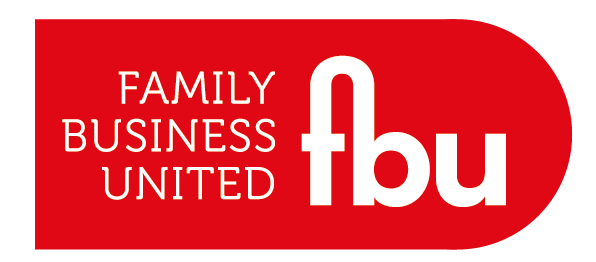Motivational Maps are offered by Alembic as an accurate way to measure three clusters of motivation, through your own self-perception. Your perception of what motivates you is measured through three lenses – relationship, achievement and growth. Once you find what motivates you, the information provided by the map can help you to empower and increase your motivation, leading to an increase in your sense of energy, productivity and ability to fulfil your role.
In this article, we are focusing on the Relationship motivators. Here, motivation comes from relationships that work and the depth and intensity of these relationships. Someone who's map is focused on the Relationship cluster is likely to value teamwork and collaborative ways of working as teamwork provides security, belonging, and recognition within the group. To them, the past is important because relationship building takes time and is a long term activity. But, can feel uncomfortable in upsetting those relationships in order to create more achievement or growth. Those who are motivated predominately by this cluster tend to be hands-on, at the bottom of Maslow's hierarchy. This can mean they are more likely to be resistant to change, slower in thinking, taking action and making decisions.
Star by Sarah Mayhew
One of the motivators in the relationship cluster is The Star. A person who is motivated by The Star is recognition driven, status-oriented and hierarchical. They value social and public recognition, being noticed, a clear pecking order, competitive opportunities, positive feedback and receiving awards and certificates. Star people are motivated by being in the limelight and by being respected and admired by those around them.
While working with Motivational Maps we have noticed that Star energy is one of those motivators that can attract negative bias from those who have a low Star. In other words, Star energy can be perceived as a real turn off by those around them. People with Star as a motivator can come across as too competitive. In their motivation to succeed, they can cause conflict within teams by overriding and being dismissive of other ideas and they can come across as needing to be treated differently and more preferentially than other members of the team.

Another way that having Star as a motivator can prove difficult is when this energy comes into direct conflict with the motivation of more senior team members. If the boss has Star as a very low motivator, they are likely to be put off by the directness of the Star characteristics and if they are not consciously aware of this style of being motivated, they will not know how to best direct the energy of this person towards productivity.
Equally, if the Star person is the boss then they may find it difficult to see and enact all the differing ways that the members of their teams will need to be motivated and that they may need to put aside their own need to be recognised to give time to the varied and often quite humble principles of good leadership.
It can be quite hard to see how The Star came to be in the relationship cluster. They can seem to be about one-upmanship rather than interested in how they are in relationship with others by those who do not have this motivator. However, the way the relationship energy is expressed by Star is through the need for recognition and respect from others and for the need to be in the confidence of more senior leaders. This need is crucial to their sense of well-being. The importance of this should not be underestimated by people who are more senior to them and making decisions regarding their career path.
We can think of Star people literally as stars. They provide a boundless source of heat and light energy to everything. They provide a source of gravitation for any group and they help the group to shine and excel. They shine a light on projects, on any problematic issues arising that need to be dealt with and they help to create the shape of the team. They understand the energy required and the output needed to fulfil the requirement of the brief, when others may feel overwhelmed by the consequences of putting the project into production. They offer inspiration, directional focus, optimism and confidence.
When each team member has an understanding of all of the motivators potentially available to the team this can become empowering knowledge. Instead of being threatened and alienated towards a person with a Star motivator a choice can be made to actively engage the way that person is motivated to increase the productivity of the team. Feelings towards this person in the team can become less personal and reactive and based more in optimising the benefits for everyone. It costs little to privately and publicly praise and to actively seek the opinions and contributions of Star people. It is also important for the boss to understand the motivators of the other people in the team so that these can be addressed and given appropriate recognition suited to their motivators. This ensures that others do not have a sense that the Star person is being given more attention. An open understanding of how each team member is motivated goes a long way to smooth the relational aspect of teams.
Friend by Nick Mayhew
As part of our series on the 9 key motivators of Motivational Maps, my job is to introduce you to "The Friend".

Motivations are so much wider and more colourful than money and status. You might argue that motivations are as varied as the people you meet, and you would be right. Even our friend, The Friend, is not one thing, but here are some great rules of thumb for understanding what drives them and how leaders can help them be at their best.
Let's start with the most obvious one. The Friend likes friendship at work. If it is their most dominant driver, Friend will be more important to them than purpose, not being micromanaged, control, feeling highly regarded for their contribution or enjoying their expertise. In fact, friendship motivation can mean people will stay in roles that otherwise do not motivate them; they stay because of their friendships and if their friends leave, they might too.
Here are 5 great do's and 5 important don'ts for leading this team player (whether this is you and these are things you can do to help yourself, or some of your team).
Do:
-
Consult. The Friend loves to belong and to feel involved.
-
See and hear them. The Friend is tuned into what is going on for people, the whole of their lives in and out of work, pay attention to this part of who they are and give it back.
-
Connect. The essence of friendship is connection, and little things like saying hello, saying goodbye, a warm smile, stopping to chat before you cut to business.
-
Stick up for them. When times are tough, friends stick together to get through the tough times.
-
Create a great social culture. Friendships can thrive in the right environment.
Don't:
-
Make them lonely. Free-ranging roles suit the Spirit, and peace can suit some Creators, but will feel isolating to the Friend.
-
Be inauthentic. A Friend connects so if you use a technique they will spot it a mile off.
-
Skimp on the social diary. A one-dimensional work environment misses chances to deepen relationships and enjoy them.
-
Allow silo's or cliques. This makes it hard for friends to naturally build bridges and communication off the lines of your organisational chart.
-
Have favourites. Friends will find this discouraging.
Remember, it's all about belonging and rewarding relationships for the Friend and this builds communication and energy across their natural connections.
Defender by Ben Grant
The subject of this article is the Defender motivator, from the relationship cluster.
The defender likes predictability and security and will thrive in this environment. They want job security, predictable hours, sound pension plans, and secure conditions of employment. They want to defend their position and build it in a managed fashion.

Photo by LinkedIn Sales Solutions on Unsplash
If there is a Defender in your team, they will likely be taking specific, positive steps to assure their future. They’ll want to consider all options when making decisions and be certain they have enough time and information to make the right choice. Their career path will likely be low risk, more tortoise than hare. Slow and steady wins the race, after all.
If you’re a manager and someone in your team has defender as one of their primary motivators, how can you motivate them?
The defender wants continuity, security, and accurate information. If you can provide these things, you will fulfil the defender motivators on your team.
What practical measures can you take to do this?
A very important thing to do is communicate as much as possible – especially when you have good news! Regular stand-up meetings can be good for this, as well as email bulletins. Defenders want security, not surprises, and certainly not unpleasant ones!
Larger organisations will often find it easier to pander to Defender motivators, in part because larger organisations are inherently more stable due to their size. This means that in smaller organisations you may have to think more about how you convey stability to your Defenders.
It can also be beneficial to explicitly reward loyalty and continued service. This provides security to the Defender that they will grow if they stay, which will motivate them further. It can also be beneficial to link the organisational goals and achievement to their personal security. If they know what is expected of them, they can be motivated to work towards it in order to increase their stability.
The Defender will also feel more comfortable if they feel you are taking a personal interest in them and their career development and options. They will appreciate the level of investment and return it in their work. General planning is also beneficial! Long term financial plans, crisis management plans, and more importantly crisis prevention plans!
Other things that you can do as a manager to increase stability for the Defender include employment perks that increase stability, such as pension enhancements and health care provisions. As well as this, ensure that dependability is an inherent part of your organisation. Your team should be dependable, but so should your equipment. Good quality hardware that functions well, and furniture that doesn’t break and isn’t tacky. Embody dependability and stability, and you will motivate the Defender.
If you have Defender as one of your primary motivators, or what you’re reading resonates with you, you can also take your motivation into your own hands as well. It’s unlikely that you’ll spend the entirety of your career in the same organisation these days, so it’s important to maintain your employability. Consistently update your knowledge and skills, take into account the changing world in order to increase the security in your life.
It is also worth noting that people’s motivators can change over time. If Defender is in your top 3, and you’re currently in a more challenging or uncertain situation than usual, it may be a lower motivator for you when the dust settles. Of course, for others, it’s not just a hobby, but a lifestyle! These people don’t just want security at times when its importance is heightened, but all the time. The same techniques will realistically work in both situations, but it’s important to keep track of your motivations as they change over time.
If you would like more information on how Motivational Maps can work for you and your team, take a look at our webpage or get in touch and we will be happy to help.




